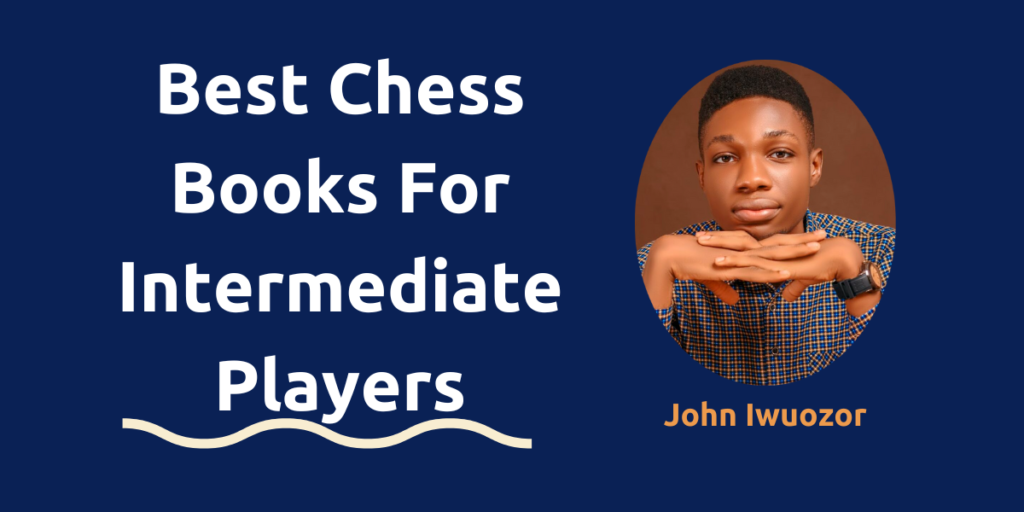In this article, I’ll go over the best book recommendations for intermediate chess players, looking mostly at players around the 1200-1800 level.
I’m talking about players who’ve learned basic tactics and opening principles but are yearning to advance their play and knowledge.
Fall in that category? Stay till the end of this article.
The Criteria for Selection
Three essential elements need to be fulfilled for a book to make our list:
- Book content needs to be accessible to intermediate players. It shouldn’t be too complicated or too basic.
- The selection of games and materials should be instructive. Often, the game fragments or total games presented have a significant impact on the learning process.
- The books need to be fun and enjoyable. Learning goes hand in hand with enjoyment. No one wants a book that’s dry and disheartening no matter how informative it might be.
With this in mind, let’s delve into the book recommendations.
The Woodpecker Method

My top recommendation for the 1200-1800 rating range is an absolutely illuminating book – “The Woodpecker Method”.
Ideal for individuals wishing to enhance their tactical training, this book seamlessly takes you from easy and intermediate to advanced tactics.
The book equips you with real-life tactics, each from a game played by a world champion.
After you’ve worked through all these tactics and corrected your strategies, the book urges you to redo them.
This repetitive practice aims to build your pattern recognition and enhance your ability to perceive a tactic on the chessboard during an actual game.
The Woodpecker Method is also on Chessable and includes checkmate puzzles from world championship games, sectioned off based on their complexity level.

The method recommends repeated solving of the same set of puzzles while tracking your accuracy and speed.
Over time, this will endow you with an intuitive tactical sense that will step up your game.
I recommend grabbing the Chessable edition as you can solve the puzzles directly on the platform.
How to Reassess Your Chess by Jeremy Silman

The middlegame is something many intermediate players struggle with heavily.
Jeremy Silman’s “How to Reassess Your Chess” comes as a savior, offering expansive, in-depth coverage of diverse aspects of middle games.
For chess players who are serious about in-depth study and improvement, this encyclopedic title is indispensable.
Whether it’s material targets, dynamics, development, structure, initiative files, space, knights, bishops, statics, and squares, you can find it in this book.
Yusupov Series: Build up Your Chess – The Fundamentals

This extraordinary series by Artur Yusupov comprises nine parts, beginning with ‘the fundamentals’.
Each part consists of twenty-four chapters, each one painstakingly dedicated to detailing crucial elements of the game such as simple pawn endgames, double checks, etc.
Complete with examples, diagrams, and succinct descriptions, these chapters help instill well-rounded chess strategies in the reader.
But that’s not all. Each chapter concludes with an engaging evaluation process in the form of a short exam.
Complete it, grade yourself, and see if you need to revisit the chapter or explore more resources to ace the topic.
Calling it a ‘coach-in-a-book’ wouldn’t be an overstatement.
100 Endgames You Must Know by De La Villa

The next must-have on your chess bookshelf, consolidating knowledge from Silman’s massive book, is “100 Endgames You Must Know” by De La Villa.
This is a great resource full of classic endgames from real-life chess games, giving you the chance to learn from grandmasters’ mistakes and practice maneuvering your pieces in their most raw form.
Zurich International Chess Tournament 1953

Lastly, if you’re curious about how grandmasters play or what life at the grandmaster level looks like, I highly suggest diving into the “Zurich International Chess Tournament 1953”.

This iconic chess tournament book takes you through its rich historical games with great commentary.
Other excellent book suggestions relating to notable chess tournaments include “1962 Curacao” and “The Fourth Candidates Tournament in Bled-Zagreb-Belgrade”.
Reading these books will allow you to learn from historical grandmasters, whose play still holds valuable lessons today.
The Move by Move Series by EVERYMAN CHESS

The Move by Move series adds great utility to your opening repertoire.
These books ensure you understand each move’s rationale in a full game context.
Complete games are discussed, taking you from the beginning to the final move with inbuilt questions and comments to promote critical thinking.
To make the best use of this series, start with a book that covers an opening you frequently play in your games.
I hope you found this guide helpful and that it assists you in your journey toward becoming a proficient chess player.
